new posts in all blogs
Viewing: Blog Posts Tagged with: community, Most Recent at Top [Help]
Results 51 - 75 of 446
How to use this Page
You are viewing the most recent posts tagged with the words: community in the JacketFlap blog reader. What is a tag? Think of a tag as a keyword or category label. Tags can both help you find posts on JacketFlap.com as well as provide an easy way for you to "remember" and classify posts for later recall. Try adding a tag yourself by clicking "Add a tag" below a post's header. Scroll down through the list of Recent Posts in the left column and click on a post title that sounds interesting. You can view all posts from a specific blog by clicking the Blog name in the right column, or you can click a 'More Posts from this Blog' link in any individual post.
By:
Ben Huberman,
on 10/15/2014
Blog:
Worth the Trip
(
Login to Add to MyJacketFlap)
JacketFlap tags:
Community,
Resources,
traffic,
branding,
Growth,
Better Blogging,
building traffic,
blogging u.,
Blogging 201,
Add a tag
Blogging 201: Branding and Growth starts Monday, October 20. If you’re a recent alum of Blogging 101 looking to build on the skills you’ve developed so far, or a blogger looking for new ways to grow your site and its audience, this is the course for you.
What will Blogging 201 cover? We’ll introduce tools to increase your traffic within WordPress.com as well as through other platforms, discuss ways to develop a coherent, effective brand for your blog, and show how to use your archives and your site’s stats to build your readership.
During this two-week course we’ll give you a daily task and provide you with all the necessary resources and information to complete it (there will be no new tasks on weekends, to give you time to explore more on your own, or just publish a post or two). You’ll also have access to The Commons, a private, staff-moderated space where you can chat with other participants, ask questions, and give feedback.
Ending right before NaNoWriMo and NaBloPoMo kick off in November, Blogging 201: Branding and Growth will help you get your site ready for a new wave of viewers — as well as to keep them coming after their first visit.
Like all Blogging U. courses, there are no prerequisites for Blogging 201 (if you’d like to follow the courses in sequence, though, that’s fine: Blogging 101: Zero to Hero will be back in November!). Self-hosted blogs and blogs from other platforms are just as welcome to participate.
If this sounds like something you’d be interested in trying, sign up for Blogging 201: Branding and Growth using this form:
Take Our SurveyFiled under:
Better Blogging,
Community,
Resources 

In Mother’s Love Can Conquer Any Fear!, author Subhash Kommuru and illustrator Sujata Kommuru have combined animals, storytelling, and expressive illustrations to successfully share the core values of family, community, and courage with young readers.
“Net Neutrality” is the simple but powerful principle that cable and broadband providers must treat all internet traffic equally. Whether you’re loading a blog post on WordPress.com, streaming House of Cards on Netflix, or browsing handcrafted tea cozies on Etsy, your internet provider can’t degrade your connection speed, block sites, or charge a toll based on the content that you’re viewing.
Net neutrality has defined the internet since its inception, and it’s hard to argue with the results: the internet is the most powerful engine of economic growth and free expression in history. Most importantly, the open internet is characterized by companies, products, and ideas that survive or fail depending on their own merit — not on whether they have preferred deals in place with a broadband service provider. Unfortunately, the principle of net neutrality, and the open internet that we know and love, is under attack.
Net Neutrality under attack
The Federal Communications Commission has proposed rules that would, for the first time, expressly allow internet providers — like Comcast, Verizon and AT&T — to charge internet companies like Automattic, Netflix or Etsy for access to their subscribers. This means there could be “fast lanes” for companies who are able to pay providers for preferred internet access, while everyone else gets stuck in the “slow lane”…which means applications won’t perform as quickly, webpages will load slowly, and of course, buffering. A slow “still loading” spinner will be an unfortunate, but common sight on the new, closed internet that the big providers want.
Unsurprisingly, the large telecom companies who stand to benefit from the FCC’s proposed rules fully support their passage. They have nearly unlimited funds and hundreds of lobbyists in Washington to promote these harmful new rules.
But what they don’t have is you.
What can we do to fight back?
Automattic strongly supports a free and open internet. After all, WordPress.com, and the WordPress open source project are living examples of what is possible on an unthrottled internet, open for creation, collaboration, and expression. Over the last few months, we’ve joined 150 major tech companies in sending a letter to Washington in support of net neutrality, and met with FCC Chairman Tom Wheeler to urge him to preserve the internet we’ve always known.
Now it’s your turn.
Automattic, along with many other companies and digital rights organizations, is proud to participate in the Internet Slowdown on September 10. For this day of action, we’ve built a “Fight for Net Neutrality” plugin that you can enable now on your WordPress.com blog to show support for this important cause.
You can turn the plugin on by going to your Dashboard, Settings → Fight for Net Neutrality.
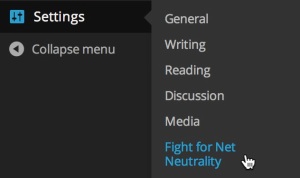
When you enable the plugin, we’ll replace a few of the posts on your site with a “Still Loading” spinner…to show what life will be like on an internet that features dreaded slow lanes.
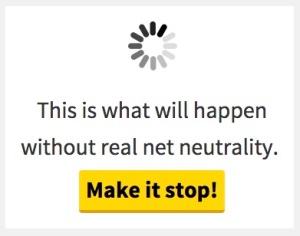
The plugin will also display a banner that shows your support for Net Neutrality, and links to battleforthenet.com, where visitors to your site can sign a letter to the FCC about this important issue.
Please take a few minutes to enable the Fight for Net Neutrality on your site today, and visit battleforthenet.com to send a message to Washington that net neutrality must be preserved. Together we can make a difference, and we hope you’ll join us in this important battle for the open internet!
Filed under:
Community,
WordPress.com 

I've culled the TWT archives for posts you might want to read during the first month of the school year.
 |
| free Public Domain image from pixabay |
I started with the big idea: Learning is Social. With that in mind, I knew I would want my students to work in all different kinds of groupings. In the past, saying, "Get together in groups" took valuable time away from the instruction or task, and instead of making all feel included, often resulted in kids being left out until grudgingly accepted into a group, usually with me facilitating.
This year I decided to be more explicit about what I wanted from groups. As I introduced the various groupings in the first days of school, I gave team-building or curriculum-based tasks to the groups to complete. So they practiced making the groups AND working in them.
The biggest group is the whole class. Our family. You don't get to choose your family; you're born into it and you have to make the best of it, even when some family members get on your nerves. I'm the "mom" of our family -- a single mom with a LOT of kids! (It was fun to share my poem
"I'm Your Mom" at this point.) We will defend our family members fiercely. We've got each others' backs.
The next group is your "tribe" -- the people with whom you feel most comfortable. I want my kids to know that it's natural, and in my room, acceptable, to want to work with your friends sometimes. Don't we all?
Another grouping is "focus groups." In market research, focus groups are made up of a wide range of consumers so that the researchers can get the most valid results. Our "focus groups" are a mixture of boys and girls, tribe members and non-tribe members.
The smallest unit is partners. Sometimes your partner is a tribe member, and sometimes I ask for mixed gender partnerships. Partners sit knee-to-knee to talk, and side-by-side to look together at a book or the work they are doing.
When we practiced making groups, the one rule was that the groups weren't formed until everyone had been included. We practiced asking to join a group, and we practiced inviting someone to join in.
Yesterday, when it was time to form focus groups for a geography challenge, I was amazed (pleased, relieved) to see how quickly the groups were formed and how no one had to invite themselves into a group -- groups invited singles cheerfully, not grudgingly. Mixed gender groups didn't feel weird or awkward because they are Focus Groups with many perspectives. Just about as quick as I could snap my fingers, the groups were made, and the geography challenge was on.
Life is good.
Stop lurking and start writing. It is the single most important thing you can do as a teacher of writing. It matters.
From sketches to digital art narratives, here’s a visual journey into the worlds of ten illustrators on WordPress.com.
The drawings at Brad Young Art capture life’s little moments. From pen and ink to watercolor, and gardening to food to neighborhood spots, it’s easy to get lost sifting through Brad’s mix of doodles and sketches.
Sarah Goodreau, an illustrator living in Amsterdam, has a distinct style marked with the warmth you’ll find in children’s picture books, as well as the mystery of surrealist landscapes. In addition to illustration, Sarah is interested in video and stop-motion animation.
At Citizen Sketcher, Montreal-based artist Marc Taro Holmes chronicles his location sketching, travel drawing, and plein air painting. His work-in-progress is refreshing, from airy landscapes to spirited pieces full of movement. When viewing his work, you can picture his hand moving across the page.
Artist Drew Dernavich works on a number of projects, from New Yorker cartoons to art for musical projects. At Words, Pictures, Humor, you’ll find highlights from his professional work.
London-based illustrator Robert M Ball shares a range of work on his blog, from his “Beautiful Death” series for HBO’s Game of Thrones to his new book, Dark Times.
Los Angeles artist Lorna Alkana experiments with multi-layered digital media and visual essays. It’s fun to read about — and see — her process of image manipulation.
Urban sketcher Pete Scully organizes monthly sketchcrawls in Davis, California. An avid keeper of sketchbooks, he’s constantly doodling, bringing the world to life with his colorful, lighthearted illustrations.
Just Look at My Face is Anna Totten’s virtual lost and found of doodles and illustrations. Playful and colorful, Anna’s work will put a smile on your face.
It’s easy to scroll through the black-and-white illustrations at Slightly Chilled Porcupine and lose track of time — at first glance, the drawings are simple, but the messages, while often quirky, are not to be dismissed. (Also, who doesn’t love porcupines?)
Award-winning artist Danny Gregory has written numerous books on art and creativity. (Fun fact: Pete Scully, mentioned above, is featured in one of them: An Illustrated Journey.) On Danny’s blog, you’ll find drawings, illustrated journaling, and essays. Be sure to also check out Sketchbook Skool, his six-week online art course.
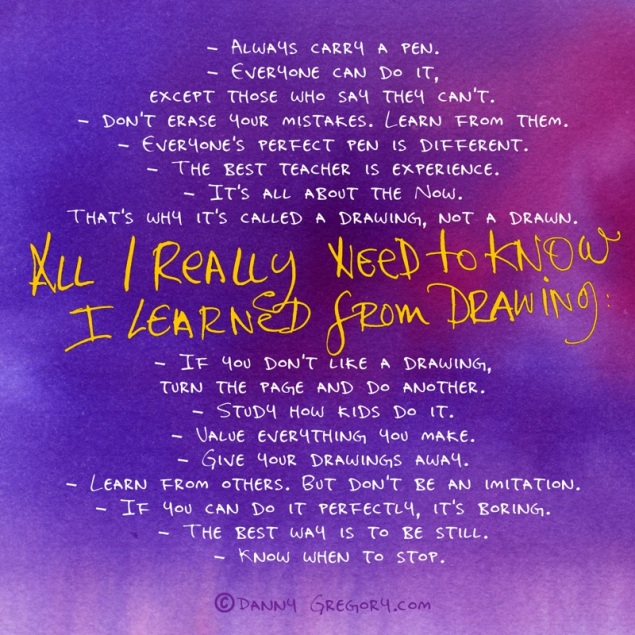
- “Let Them Draw Cake,” Danny Gregory
Want more? Browse some of our favorite art and design blogs, or explore the illustration tag in the Reader.
Filed under:
Community,
WordPress.com 

Fostering a nurturing writing community at the beginning of the school year means taking the time to build a community of writers. Here's an artistic way you can have students introduce themselves, and their quirks, to their peers.

By: DanP,
on 8/9/2014
Blog:
OUPblog
(
Login to Add to MyJacketFlap)
JacketFlap tags:
Books,
community,
Law,
Sociology,
Racism,
london,
Current Affairs,
crime,
discrimination,
justice,
prejudice,
victimisation,
mediation,
hate crime,
criminology,
restorative justice,
restorative,
Social Sciences,
*Featured,
crime and law,
dr mark austin walters,
hate crime and restorative justice,
southwark,
“community”,
Add a tag
By Mark Austin Walters
Hate crimes are offences that are motivated by hostility, or where some form of demonstration of hostility is made, against the victim’s identity. Such crimes can have devastating impacts, both on those directly victimised and on other community members who fear they too may be targeted. While much has been written about the impacts of hate crime victimisation, there has been little which has focused on how the criminal justice system can effectively address the consequences of hate — other than through criminalising and punishing offenders.
A relatively new theory and practice of criminal justice is that of “Restorative Justice” (RJ). RJ seeks to bring the “stakeholders” of an offence together via inclusive dialogue in order to explore what has happened, why it happened, and how best those involved in the offence can repair the harms caused. There is now a substantial body of research into the effectiveness of RJ for violent and non-violent offences. Yet there has been little attention paid to whether such a process can effectively address crimes motivated by identity-based prejudice.
The harms caused by prejudice-motivated crime can relate both to the individual traumas experienced by victims, and the structural harms faced by many marginalised communities. The individual and structural harms caused by hate crime are not easily remedied. The current approach to combating hate crime via criminalisation and enhanced penalties, while important symbolically to the combatting of hate crime, does little to directly repair harm or challenge the underlying causes of hate-motivated offending.
In order to understand more about the reparative qualities of Restorative Justice for hate crime an empirical study of RJ projects was conducted where practices were used to address the causes and consequences of hate crime offences. The 18 month project involved 60 qualitative interviews with victims, restorative practitioners, and police officers who had participated in a restorative practice. In addition, 18 RJ meetings were observed, many of which involved face-to-face dialogue between victim, offender, and their supporters. One such project, administered by the Hate Crimes Project at Southwark Mediation Centre, South London, used a central restorative practice called Community Mediation, which employs a victim-offender or family group conferencing model. The cases researched involved “low-level” offences (including crimes aggravated by racial, religious, sexual orientation, and disability hostility) such as causing harassment, violence, or common assault, as well as more serious forms of violence including several cases of actual bodily harm and grievous bodily harm.
In the Southwark Hate Crimes Project, the majority of complainant victims (17/23) interviewed stated that the mediation process directly improved their emotional wellbeing. Further exploration of the process found that the levels of anger, anxiety, and fear that were experienced by almost all victims were reduced directly after the mediation process. Victims spoke at length about why the dialogical process used during mediation helped to improve their emotional wellbeing. First and foremost, participants felt they could play an active role in their own conflict resolution. This was especially important to most victims who felt that they had previously been ignored by state agencies when reporting their experiences of victimisation. Many noted that they were finally being listened to and their victimisation was now being taken seriously.

It was of utmost importance to victims that the perpetrator signed an agreement promising to desist from further hate incidents. In terms of desistance, 11 out of 19 separate cases of ongoing hate crime incidents researched in Southwark ceased directly after the mediation process had taken place (participants were interviewed at least six months after the mediation process ended). In a further six cases incidents stopped after the community mediator included other agencies within the mediation process, including schools, social services, and community police officers.
Unfortunately, the positive findings reported from Southwark were not repeated for the restorative policing measures used for low-level offences by Devon and Cornwall Police. Just half of the 14 interviewees stated that they were satisfied with the outcome of their case, where an alternative restorative practice, called Restorative Disposal was used. There were several reasons for lower levels of harm reparation at Devon and Cornwall, most of which were directly linked to the (lack of) restorativeness of the intervention. For example, several participants felt pressured by the police to agree to the intervention which had direct implications for the voluntariness of the process – a key tenet of restorative justice theory and practice.
Collectively, these results suggested that where restorative justice is implemented by experienced practitioners committed to the values of “encounter,” “repair,” and “transformation” it could reduce some of the harms caused by hate. However, where Restorative Justice was done “on the quick” by facilitators who were not equipped with either the time or resources to administer RJ properly, victims will be left without adequate reparation for the harms they have endured.
Another key factor supporting the reparative qualities of restorative practice, is reconceptualising the central notion of “community”. It is important to understand the complex dynamics of “community” by recognising that it may have certain invidious qualities (that are causal to hate-motivated offences) as well as more benevolent virtues. Equally, “community” may provide a crucial conduit through which moral learning about “difference” can be supported and offenders can be reintegrated into neighbourhoods less likely to reoffend.
Although the notion of community is an elusive concept, it is important for the future use of restorative practices for practitioners to view community organisations as important components of local neighbourhoods. These organisations (including neighbourhood policing teams, housing associations, schools, colleges, and social services) have an important role to play in conflict resolution, and must work together using a multi-agency approach to addressing hate crime. Such an approach, if led by a restorative practitioner, allows the various agencies involved in tackling hate victimisation to combine their efforts in order to better support victims and manage offenders. Hence, Restorative Justice may have scope to not only mitigate against the traumas of direct victimisation but also some of the structural harms that marginalised groups continue to experience.
Dr Mark Austin Walters is a Senior Lecturer in Criminal Law and Criminal Justice at the University of Sussex, and the Co-Director of the International Network of Hate Studies. He is the author of Hate Crime and Restorative Justice: Exploring Causes and Repairing Harms, which includes a full analysis of the impacts of hate crime, the use of restorative justice, multi-agency partnerships and the importance of re-conceptualising “community” in restorative discourse in cases involving “difference”. A full text of the book’s introduction ‘Readdressing Hate Crime’ can be accessed online.
Subscribe to the OUPblog via
email or
RSS.
Subscribe to only law articles on the OUPblog via
email or
RSS.
Image credit: Southwark bridge at night, by Ktulu. CC-BY-SA-3.0 via Wikimedia Commons.
The post Hate crime and community dynamics appeared first on OUPblog.


By:
Jen Robinson,
on 8/5/2014
Blog:
Jen Robinson
(
Login to Add to MyJacketFlap)
JacketFlap tags:
community,
Reviews,
fiction,
summer,
Middle School,
Newsletter,
good deeds,
first kiss,
neighborhood,
michele weber hurwitz,
Add a tag
Book: The Summer I Saved the World ... in 65 Days
Author: Michele Weber Hurwitz
Pages: 272
Age Range: 10 and up
 The Summer I Saved the World ... in 65 Days is about a thirteen-year-old girl who decides to do "one good thing every single day", anonymously, over the summer before starting high school. This would not ordinarily be my sort of thing. But The Summer I Saved the World ... in 65 Days is about much more than the good deeds themselves. It's about that awkward stage in life when you start to grow in different directions from your childhood friends. It's about neighbors, and family, and the very early stages of adolescent attraction. And of all of this is exactly my sort of thing. I liked this book very much.
The Summer I Saved the World ... in 65 Days is about a thirteen-year-old girl who decides to do "one good thing every single day", anonymously, over the summer before starting high school. This would not ordinarily be my sort of thing. But The Summer I Saved the World ... in 65 Days is about much more than the good deeds themselves. It's about that awkward stage in life when you start to grow in different directions from your childhood friends. It's about neighbors, and family, and the very early stages of adolescent attraction. And of all of this is exactly my sort of thing. I liked this book very much.
Nina is someone who most readers will be able to relate to on one level or another. She likes playing basketball (though she's not sure she can make the high school team). She's exploring a new interest in art. She has a group of friends that she's spent time with because of common activities, but isn't sure she really belongs with them. She plays cheerfully with the little boy next door. She feels frustrated by her work-obsessed parents, and mourns a time when her family was different. And she both loves and is frustrated by her long-time best friend, Jorie. She declares herself "in beween everything". So many of us have been there at one point or another.
The Summer I Saved the World ... in 65 Days could almost have been written about a girl about to start middle school, instead of high school. It is definitely age-appropriate for middle schoolers - there are a couple of kisses; even the rebellious older brother sits around with his friends and plays poker and drinks root beer.
It's also relatively timeless. Much is made of Nina's not-very-functional cell phone. To me this seemed to be a device to keep Nina focused on the real world, and real conversations. There's plenty of playing ball in the cul-de-sac, gardening, and going to the playground.
One thing that I really liked about this book was the way that the author highlights everyone in Nina's small neighborhood. This includes people of all ages, and at least a bit of ethnic diversity. There's a little map of the cul-de-sac at the front of the book, adding to cozy feel of the setting.
There's no question that The Summer I Saved the World ... in 65 Days is a feel-good, coming of age story. Nina learns to "step up", instead of waiting for other people to do things. Her actions help to draw the neighborhood together (despite the suspicious reaction of one resident). But Michele Weber Hurwitz keeps the book from feeling message-y by focusing on Nina's first-person voice, and by making it clear that everything Nina does is self-directed. Here's what Nina has to say about it:
"I've never been terrific at finishing projects. This past year, I started a scrapbook, a journal, three books, daily yoga stretches, and a beauty routine involving a weekly mask and blackhead strips. I didn't continue any of them. I got bored, distracted. But the sixty-five things are something I want to finish. I have to. They're sneaky and fun and exciting--thinking of them, figuring out how to keep them secret. Every time, I get this filled-up, kind of powerful feeling. Strong. Hopeful." (Page 53)
The Summer I Save the World ... in 65 Days is a very nice read for middle schoolers, more girls than boys, I think (particularly given the pink and yellow cover). It addresses that yen that kids get sometimes to be a better person, and also explores the "in between" times that arise as kids grow up, and sometimes grow away from other people. There's a light romance and a smidgen of family drama to keep things interesting. The Summer I Saved the World .. in 65 Days is a fun book with heart. Recommended!
Publisher: Wendy Lamb Books (@RandomHouseKids)
Publication Date: April 8, 2014
Source of Book: Review copy from the publisher
FTC Required Disclosure:
This site is an Amazon affiliate, and purchases made through Amazon links (including linked book covers) may result in my receiving a small commission (at no additional cost to you).
© 2014 by Jennifer Robinson of Jen Robinson's Book Page. All rights reserved. You can also follow me @JensBookPage or at my Growing Bookworms page on Facebook.

I neglected to post a picture of this earlier, but I did think it deserves a mention:
 |
| 6-9 year old class |
This crazy installation is made up of yards of finger crochet from a group of girls who were first reluctant to learn and became crocheting fools once it clicked for them - fun!
BlogHer 2014, the 10th anniversary celebration of the popular women’s blogging network, kicks off next Thursday, July 24th in San Jose, California. There’s still time to register, and we hope you do — we’ll be there, too!
This year, along with a Happiness Bar offering in-person support for your WordPress sites, we’re hosting a series of short workshops on the topics you care about most. We’re also excited to welcome some of the amazing WordPress bloggers nominated as BlogHer Voices of The Year — they’ll join us for a series of informal panels where we can chat all things blogs and blogging.
Interested? Here’s the schedule:
Friday, July 25
- 10 AM: Talking Shop with BlogHer Voices of the Year
- 11 AM: WordPress.com or Self Hosted: Which One is Right for You?
- 12:30 PM: Own Your Content: Tips for Switching Blog Platforms
- 1:30 PM: Talking Shop with BlogHer Voices of the Year
- 2:30 PM: Getting Great WordPress Support
- 3:30 PM: Master Your Domain
Saturday, July 26
- 10:30 AM: Own Your Content: Tips for Switching Blog Platforms
- 12:00 PM: Plugins: Taking Your WordPress Blog to the Next Level
- 1:30 PM: Fight for Your (Copy)Right: Intellectual Property Basics
- 2:30 PM: Get Social: Your Content, Your Networks
- 3:30 PM: Talking Shop with BlogHer Voices of the Year
The WordPress booth will have everyone from editors to developers to Happiness Engineers to VIP managers there to talk about every aspect of the blogging (and Automattic) experience. BlogHer ’14 is jam-packed with inspiring and educational programming, but we hope you’ll find a few minute to swing by — we’d love to say “hi!”
If you’re not able to be there but want to follow the fun on Twitter, follow #BlogHer14. We’ll also be tweeting with the #WPlovesBlogHer hashtag.
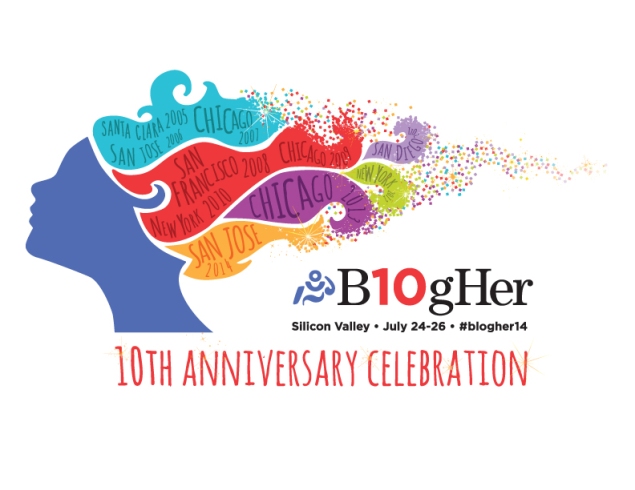
Filed under:
Community,
Events 

This class was kind of funny too. I came up with the idea with older kids in mind, but the way it worked out we were a group of 6-9 year old's. I had had great plans of room size fiber installations and free form crochet/knit/weaving projects, but for these smaller people we took it down a notch.
These snakes were knit on an oversized "knitting Nancy". Although a few of the kids grumbled a bit about the time it took to make them, as soon as the eyes and tongues were added they were in love.
The girl faces were embroidered on a hoop, then hand sewn into little pillows and stuffed.
By the end of the week everyone's patience and attention span had magically expanded and they were crocheting fools. (picture of the "magic tree" installation to follow later)
This was an adorable group of 5, most of them around the age of 3. We explored collage, charcoal, paint and sculpture projects and had some crazy times. To be honest, the water bucket was the most popular item, along with chalk paint and storytime projects.
Launched last month, Pictorico is a free theme that combines a dynamic portfolio-style home page with a simple, single-column layout for posts and pages. It’s great for pro photographers, casual photobloggers, and anyone who wants a sleek space for personal blogging.
Let’s take a look at a few sites using Pictorico:

British blogger Issy shares recipes at A Feast for the Eyes, a name that perfectly captures the focus of the site: food and photography. Pictorico‘s front-page grid displays her mix of dishes beautifully — her images are crisp and bold, while her plate setups are stylish and carefully considered.
Issy sets featured images on individual posts, adding color and sophistication to the header area. She also takes advantage of the theme’s clean, single-column layout, letting her images shine on the page:


The traveler and outdoor enthusiast at Ubuntu sets a wide custom header image, which changes the homepage look of Pictorico. The panorama of snowy, jagged peaks is the first thing you see, and captures the blogger’s wandering, adventurous spirit. Pictorico‘s custom header area accommodates images of at least 1180 pixels wide, so the visual effect is dramatic.

New Zealand-based photographer Blair Quax of Shine Studios uses Pictorico to publish his wedding photography, much of which captures the beauty of Waiheke Island. The front-page portfolio design of Pictorico allows Blair to showcase distinct wedding day collections at a glance. Single post layouts are elegant and uncluttered, so the focus is entirely on the couples celebrating their special days.
Blair activates the theme’s post slider as well, which adds another layer to the front page:

More Pictorico examples
Visit the Pictorico page for details, other examples, and to preview or activate the theme.
Filed under:
Community,
Design,
Themes,
WordPress.com 

By:
Liz Carmichael,
on 6/13/2014
Blog:
Liz Carmichael's Portal
(
Login to Add to MyJacketFlap)
JacketFlap tags:
Community,
Reading,
iraq,
army,
veterans,
afghanistan,
military,
vietnam,
marines,
PTSD,
Add a tag
Last week was the 70th anniversary of D-Day, the start of the Allied landing in Normandy, France, that contributed to the end of World War II.
While some marked it with (deserved) pomp and circumstance, we observed it by reading the latest from some of our favorite veterans’ blogs on WordPress.com:
Then-infantryman Don Gomez served two tours in Iraq with the US Army in the early 2000s. After a stint in graduate school and a dissertation on the experiences of Iraqi soldiers during the Iran-Iraq War, he re-upped and heads to Afghanistan later this summer as a Second Lieutenant.
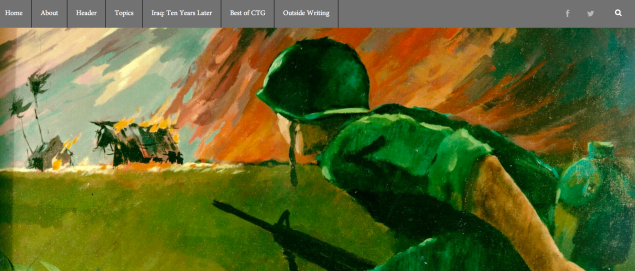
His blog, Carrying the Gun, is a mix of thoughtful essays on everything from modern soldiering to women in combat to the transition from soldier to civilian. Sprinkled throughout are photos and letters from his Iraq deployments — a fascinating portrait of the life on the front lines.
O-Dark-Thirty is a literary journal for veterans, current military personnel, and their families. Created by the Veterans Writing Project, it helps those who have served tell their stories — and makes sure those stories are accessible to the rest of us.

The magazine is home to The Report, which publishes unedited fiction, non-fiction, and poetry, and The Review, an edited quarterly journal presenting the best literary writing on the veterans’ experience. Browse the latest entries for a poetic take on the forgotten veteran, a fictionalized encounter between German and Russian troops, and a writer’s memoir of a day spent driving his wounded brother to yet another hospital.
O-Dark-Thirty accepts submissions year round — find their guidelines here — and the Veterans Writing Project holds workshops around the US.
For many soldiers, especially those who have served in combat roles, returning to “regular” life brings a new set of challenges. In Paving the Road Back, psychiatrist and Warrior Wellness Unit director Rod “Doc” Deaton gives those who serve our veterans a deeper understanding of the stresses of this transition.

Readers seeking information on Post-Traumatic Stress Disorder will find analyses of the ethics of PTSD diagnoses and the relationship between PTSD and other psychiatric disorders, along with the stories of real veterans (fictionalized, to protect their privacy). “Doc” also provides the transcripts of his podcast, “Beam Me Up, Scotty,” and a variety of additional links and resources.
For more reading, check out:
- Firefight, blog of Rick Kurelo, who served with Canadian forces in Bosnia and Afghanistan and recently published a book on his experiences.
- Fever Dreams, the official site of Brian Castner, Iraq veteran and author of the bestselling book The Long Walk.
- Voices from War, which provides writing workshops for veterans interested in telling their stories.
- Jason Lemieux, a former Marine and current human rights advocate.
- True Boots, the blog of Army vet and frequent NPR guest Kristen Rouse.
- From the Green Notebook, where current Army officer Joe Byerly discusses military life and leadership best practices.
- Grand Blog Tarkin, a collaborative blog at the intersection of contemporary warfare and science fiction covering “the full range of war and warfare across the multiverse.”
Filed under:
Community,
Reading 

A year ago today, we joined the world in shock on learning that governments were spying on internet users around the world. Tapping internet service providers’ undersea cables, intentionally and secretly weakening encryption products, surreptitiously collecting everything from call metadata to photos sent over the internet by US citizens — nothing was off limits.
Just as troubling as the revelations themselves is the fact that since last summer, little if anything has changed. Despite a lot of rhetoric, our three branches of government in the United States have not made many concrete steps toward truly protecting citizens from unchecked government surveillance.
Automattic has been a strong supporter of efforts to reform government surveillance. We’ve supported reform legislation in Congress, and participated in the Day We Fight Back, earlier this year. More importantly, we aim to make our own legal processes for securing the information our users entrust to us as transparent and protective as possible.
Be the change you want to see in the world — that’s why we’re joining the many other companies who are participating today in Reset the Net. In the face of intrusive surveillance, we believe that everyone in the tech community needs to stand up and do what they can, starting with their own sites and platforms. For us, that means working to secure the connection between users and our websites. We’ll be serving all *.wordpress.com subdomains only over SSL by the end of the year.
If we’ve learned anything over the past year, it’s that encryption, when done correctly, works. If we properly encrypt our sites and devices, we can make mass surveillance much more difficult.
We’re happy to be taking these steps and hope that the coming year brings real reform to end mass surveillance.
Filed under:
Community 

Twenty Fourteen is much more than a magazine theme. From blog to small business homepage, Twenty Fourteen does it all -- as these four sites show.
Writer and superdad Jerry Mahoney chats with us about his new book based on his popular blog, Mommy Man, and his experiences blogging on WordPress.com.
Download a free excerpt and test your WordPress trivia knowledge for a chance to win a copy of Scott Berkun's A Year Without Pants.
Blogging is about both publishing and finding a community. These three writers' hubs bring together bloggers from all over the world.
With International Museum Day approaching on May 18, let's browse the blogs of some museums on WordPress.com -- from premier art institutions to science and natural history organizations.
One WordPress.com staffer challenged the others to a month-long blogging challenge... and you'll never guess what happened next! (Spoiler: we blogged a lot.)
Hey YALSA members, I want to hear from you!
In recent years, the President and Board of Directors have held virtual town halls to hear great ideas, get feedback on activities, and talk through goal areas in YALSA’s mission. On May 7th at 2 pm EST, we’d like take the broad view and talk through your overall YALSA experience. Specifically, we’ll be covering the following four questions:
- What is it about the organization that has earned your loyalty?
- What does YALSA do that frustrates you?
- What are three things that YALSA could do that would add the most professional value to the career of teen librarians?
- What are your three biggest concerns or needs?
Your thoughts can help YALSA become an even more responsive and relevant organization, so please, speak up! We’ll be meeting via this Adobe Connect space. Chat and audio will be available, but virtual bonus points will be given to those with a microphone too! Feel free to log-in at anytime in the next week to test your device’s capability and setup.
Thanks and I look forward to talking with you.
Shannon

Ecologists and entomologists. Natural history buffs. Bloggers with green thumbs. We're among many WordPress.com users focused on nature and the environment. Today, let's celebrate the work of some of these bloggers.
View Next 25 Posts














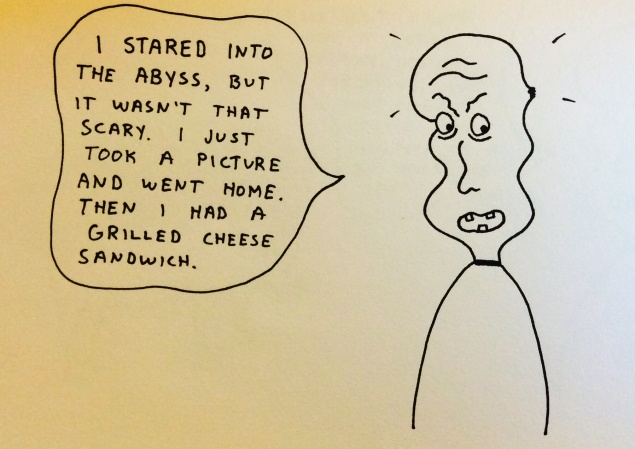















An extremely interesting post. I am 100% behind thi campaign. It would very disappointing for the vast majority of internet users if there ever were a fast and slow lane for internet traffic
The Science Geek
LikeLiked by 2 people
Enabled!
Love the joined fight!
Speed onward!
LikeLike
I’m in the fight too! Thank you WordPress for giving us a voice!!
LikeLike
What is happening outside the US? Anyone know?
LikeLiked by 3 people
I love this idea I will definitely support this cause
LikeLike
Done and done.
LikeLike
right behind you
LikeLike
Set my banner. Thanks for keeping us aware. Sometimes things aren’t noticed due to the business of life. This is definitely something I want to stop my rush, read and be a part of spreading the word. Mahalo for sharing not only the post, but the chance for us to share with our readers.
LikeLiked by 2 people
Enabled, Godspeed!
LikeLike
This is a great idea! Thank you, Automattic, for jumping in and making it easy for WP devs and bloggers to join in. Now, to go and convince those clients that this is a necessary one-day evil…
LikeLike
Done and done. Thank you.
LikeLike
Am onboard for this worthy cause!
LikeLike
Reblogged this on nuriandnerdpower and commented:
Because the internet belongs to us all.
LikeLike
thanks for the great idea.it’s done
LikeLiked by 1 person